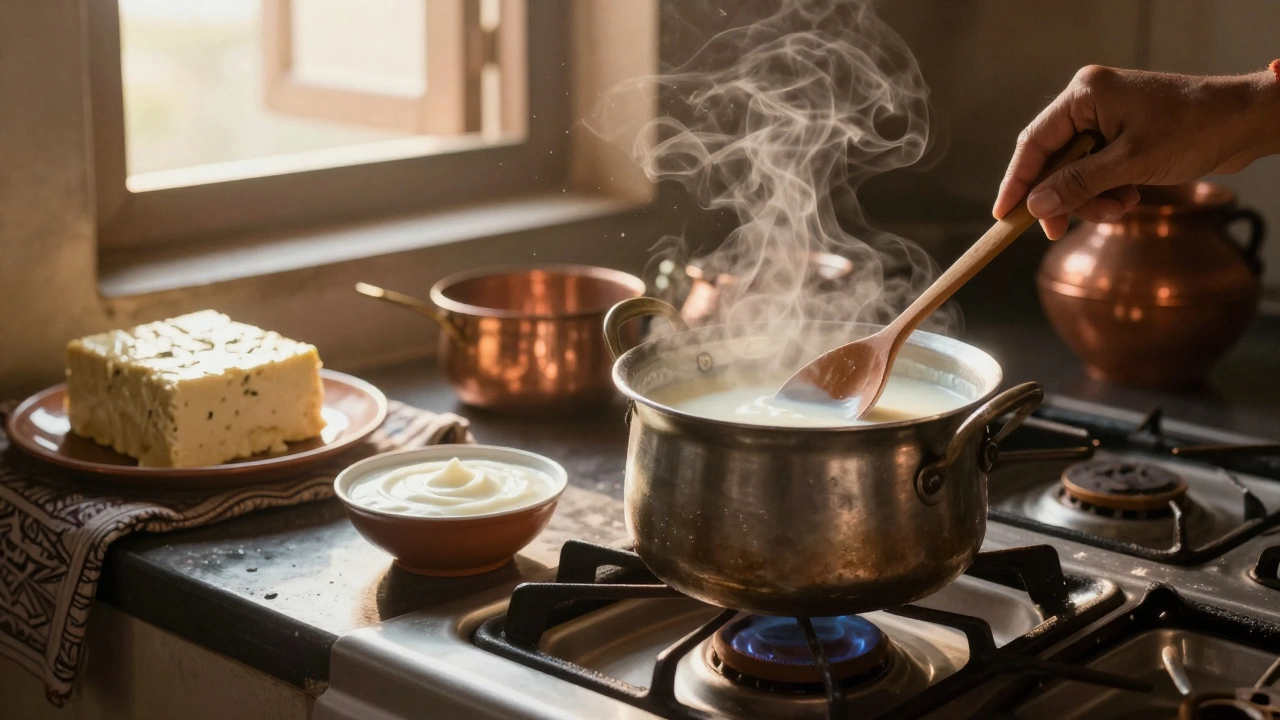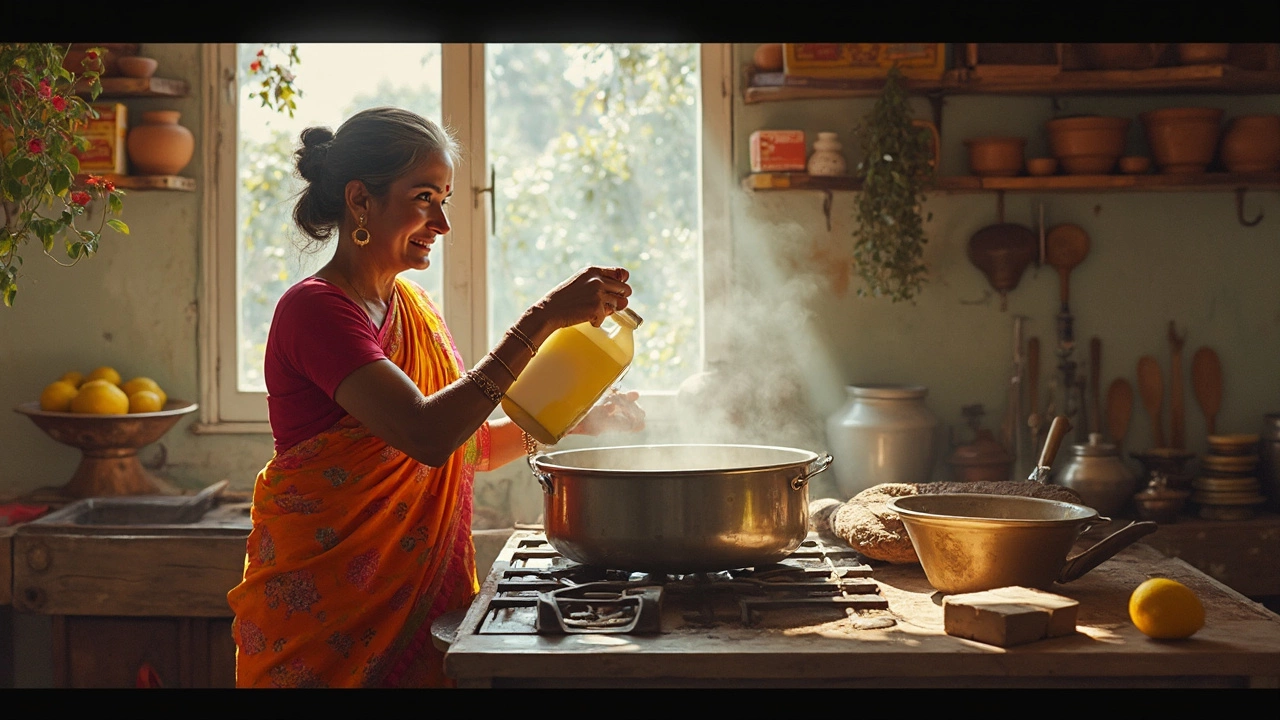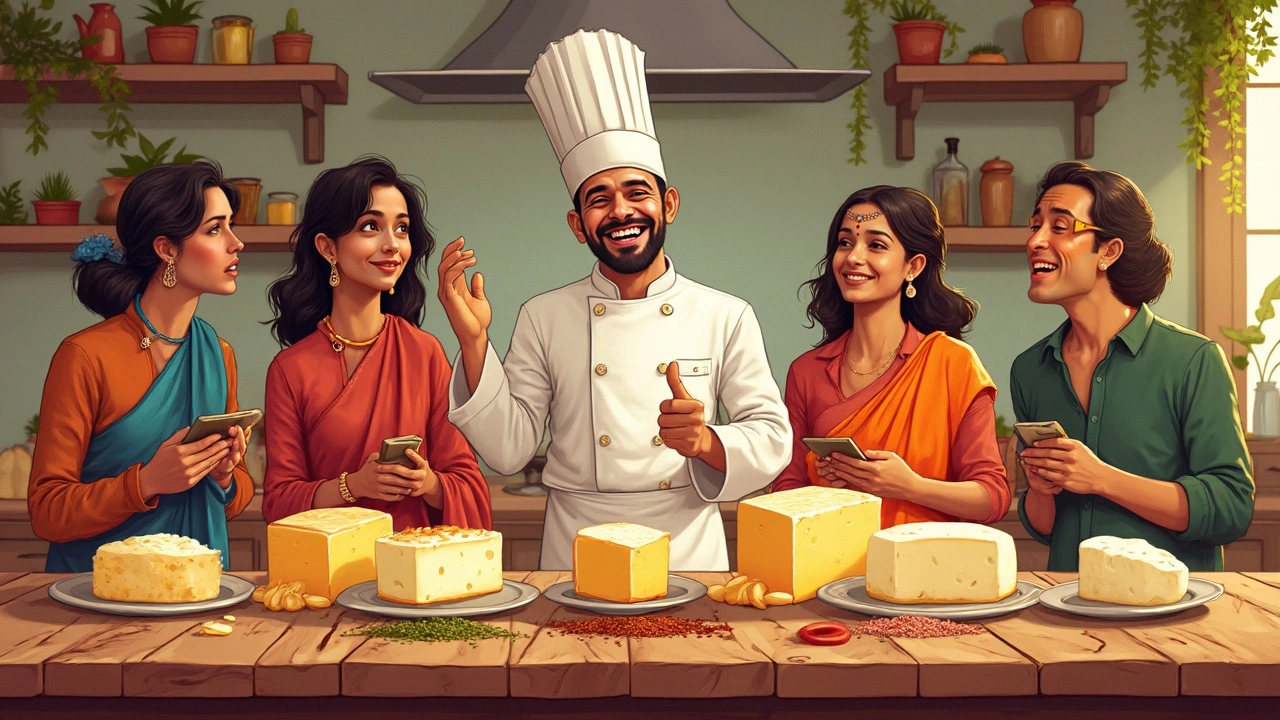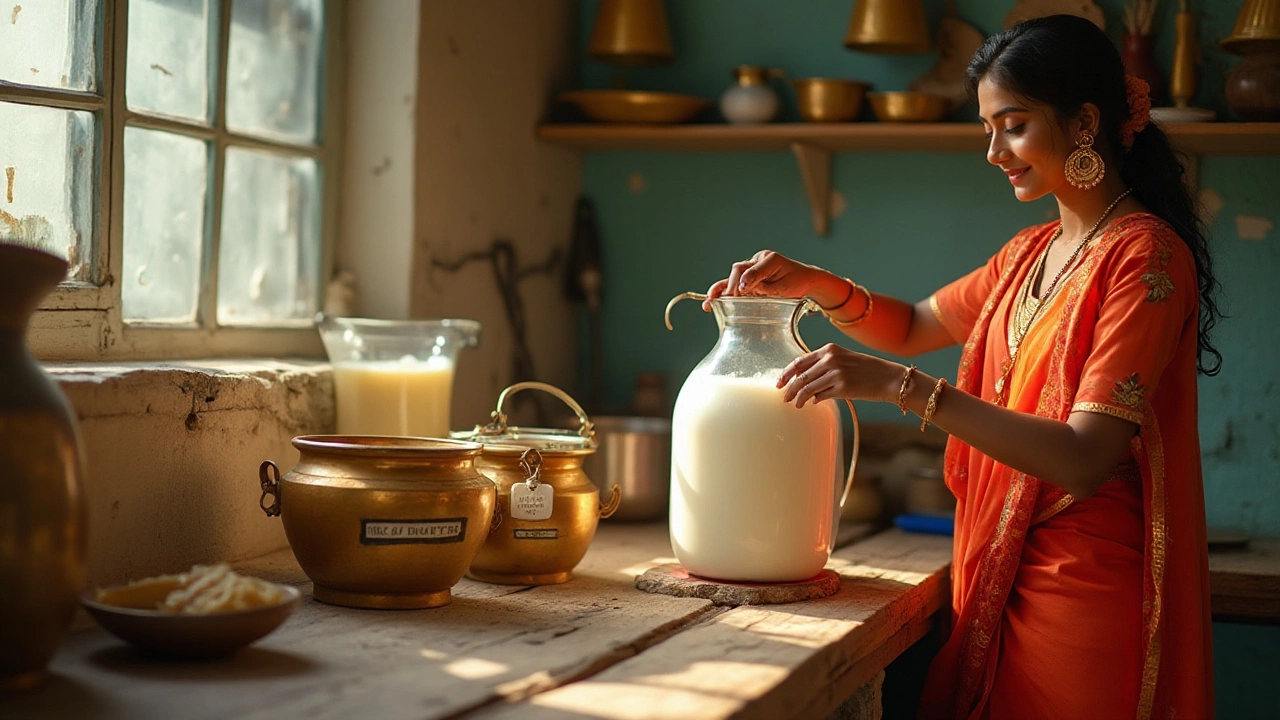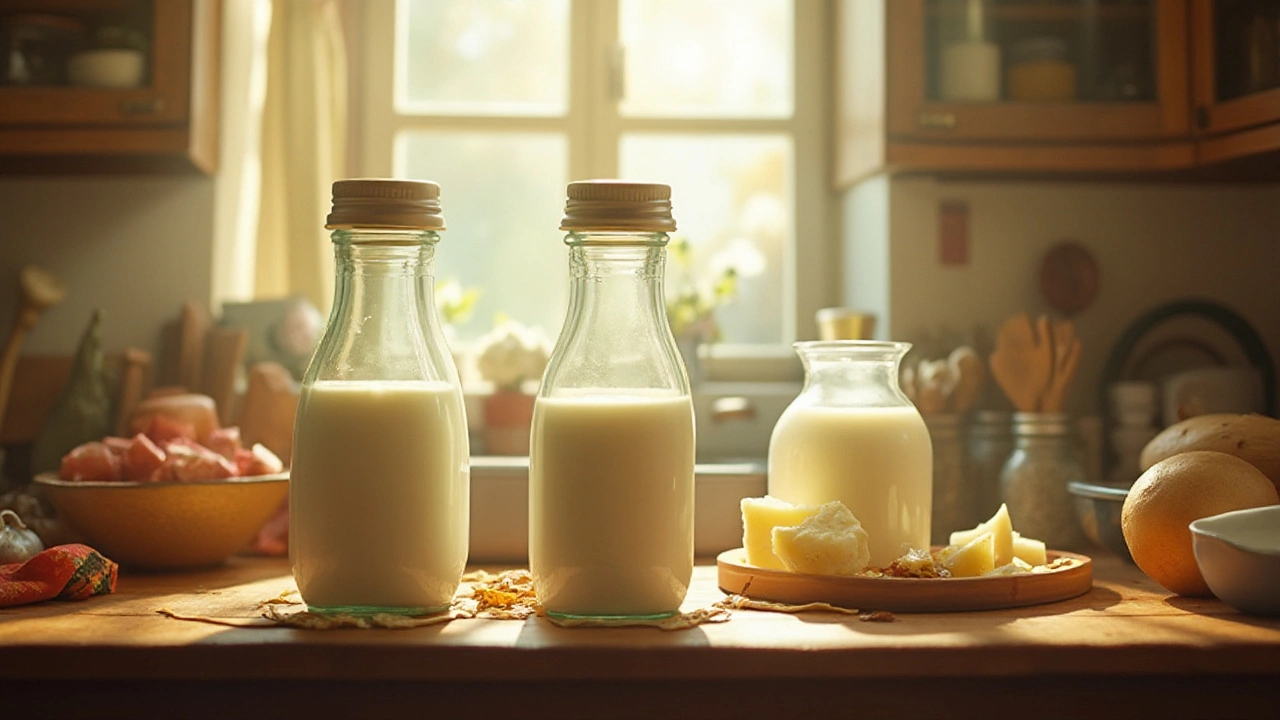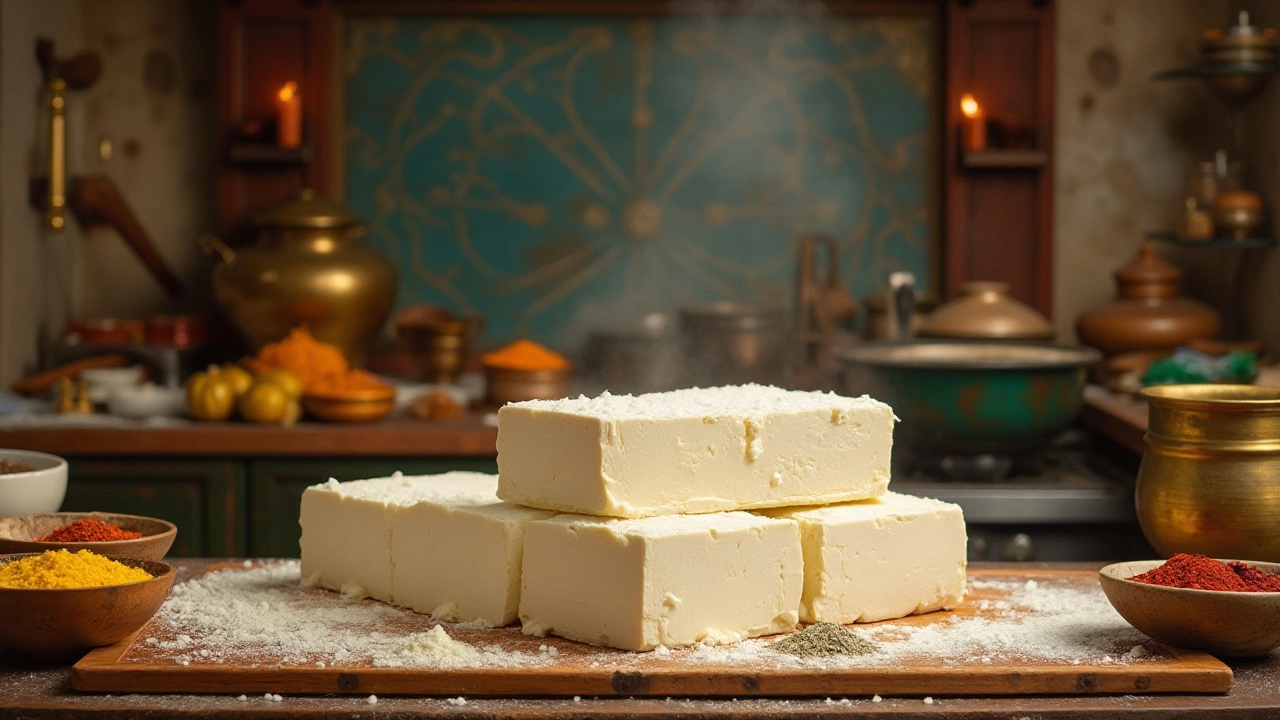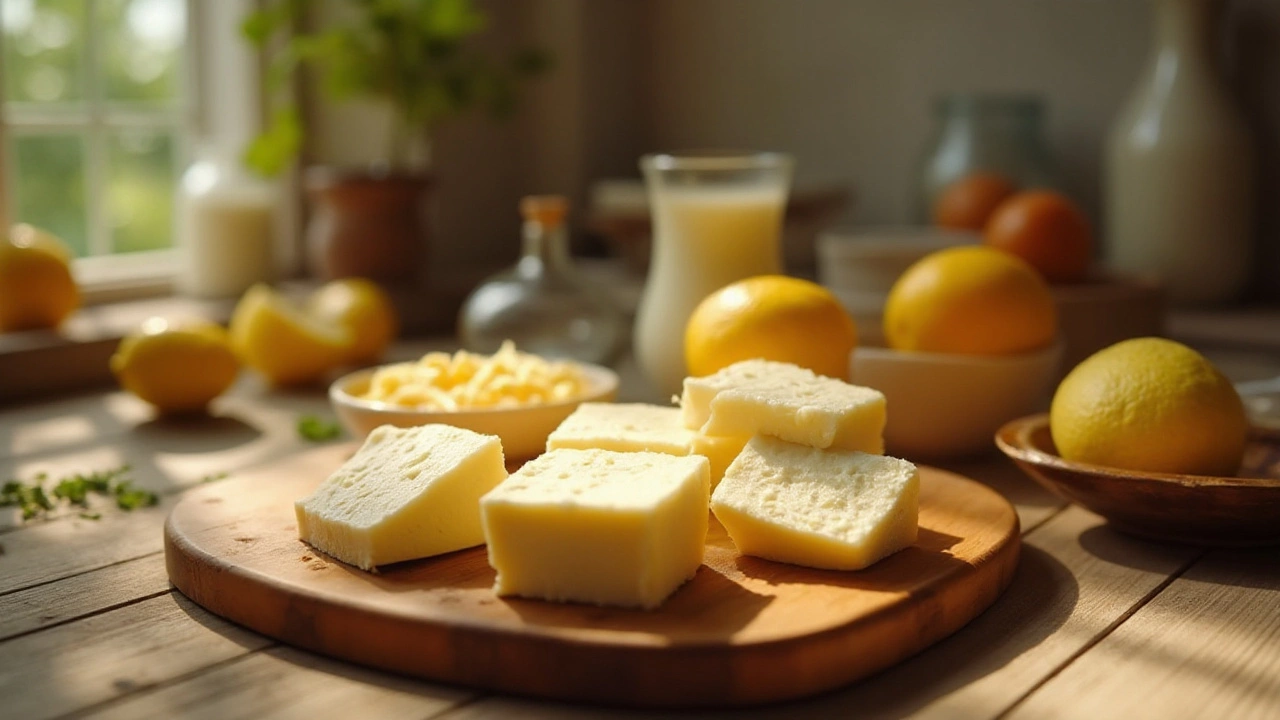Homemade Paneer Made Simple
Paneer is the go‑to cheese for many Indian dishes, but buying it can be pricey and sometimes the texture isn’t right. Making it at home solves both problems. You only need a few ingredients, a pot, and a bit of patience. In this guide you’ll get a step‑by‑step method, storage tricks, and ideas for using the fresh cheese in everyday meals.
How to Make Paneer at Home
Gather milk, lemon juice or vinegar, and a clean cheesecloth. Whole milk works best because it gives a richer curd, but 2% works if that’s all you have. Heat the milk in a heavy‑bottomed pot over medium heat. Stir occasionally so it doesn’t stick. When the milk reaches a gentle boil, turn off the heat and add the acid slowly. You’ll see the curds separate from the whey within a minute.
Let the mixture sit for five minutes so the curds firm up. Then line a colander with cheesecloth, pour the curdled milk in, and let the whey drain. Gather the corners of the cloth, tie them together, and hang the bundle for about 30 minutes to squeeze out excess liquid. For softer paneer, shorten the hanging time; for firmer cubes, let it hang longer.
After draining, press the wrapped curd with a heavy pan or a clean weight for 10‑15 minutes. This step gives the paneer its shape. Unwrap, cut into cubes or slices, and you’re ready to cook. Fresh paneer should be white, moist, and hold together without crumbling.
Storing and Using Homemade Paneer
Paneer stays fresh in the fridge for up to three days if you keep it in a shallow container of cold water. Change the water daily to maintain the texture. For longer storage, freeze the paneer in an airtight bag; it will last a month. Thaw it in the fridge before using, and you may notice a slightly softer texture—perfect for curries.
Use your homemade paneer in classic dishes like palak paneer, paneer tikka, or paneer bhurji. It also works great in salads, sandwiches, or grilled on a skewer with a drizzle of lemon. Because you control the quality, you can add aromatics like crushed pepper or herbs to the curd before pressing for a flavor boost.
Quick tip: if you want a smoky taste without a grill, pan‑fry the cubes in a little oil until they turn golden. The surface gets a nice crust while the inside stays soft. Pair with a squeeze of lime and a sprinkle of chaat masala for an instant snack.
Making paneer at home is cheap, satisfying, and lets you customize texture and taste. Give it a try next time you need cheese for a curry or a snack. With just milk, an acid, and a cloth, you’ll have fresh paneer ready to boost any Indian recipe.
How to Curdle Milk Without Lemon and Vinegar for Homemade Paneer
Learn how to make fresh paneer at home without lemon or vinegar using yogurt, buttermilk, or naturally soured milk. Discover the best alternatives, common mistakes, and how to store your homemade cheese.
How Much Paneer from 1 Gallon of Milk? A Real Kitchen Yield Guide
Ever wondered how much paneer you can actually get from a gallon of milk? This article breaks down the numbers and steps, so you’ll never over- or underestimate your homemade paneer yields again. Learn about the key factors that affect how much paneer you get, plus some pro tips to make your batch awesome. Find out how to make, store, and use that fresh paneer for the tastiest results. Real examples and kitchen-tested facts help you get the most out of every batch.
Is It Cheaper to Make Paneer? The Real Math Behind Homemade Paneer
Wondering if making paneer at home saves money compared to grabbing it from the store? This article breaks down actual costs, compares homemade vs store-bought paneer, and shares the best ways to get top results without breaking the bank. You'll learn exactly what you need, what to expect in terms of time and effort, plus tips for making your rupees—or dollars—go further. Perfect for anyone who's tempted to try making paneer for the first time or just wants to cut back on grocery bills.
Which American Cheese Comes Close to Paneer?
Choosing the right cheese can be tricky when you're looking for something that mirrors paneer's unique qualities. This article breaks down which American cheese types could serve as a close match to paneer, examining aspects like taste, texture, and how they behave when cooked. With insights into cheese characteristics and practical tips for cooking, you'll find it easier to adapt your favorite paneer recipes when paneer isn't available.
Choosing the Best Milk for Homemade Paneer: A Comprehensive Guide
Making paneer at home can be a rewarding experience, but choosing the right milk is crucial for the perfect texture and flavor. While milk options like cow, buffalo, and plant-based alternatives offer different results, each has its own distinct qualities that impact the paneer making process. Purity, fat content, and freshness are key factors to consider when selecting milk for your paneer. This article explores the various types of milk available, offering tips and insights to help you create the best homemade paneer.
How to Prevent Milk from Curdling While Making Paneer
Making homemade paneer can sometimes lead to the annoying issue of milk curdling unexpectedly. This article offers three effective ways to avoid this problem. Learn about optimal milk selection, controlling temperatures, and using stabilizing ingredients. With practical tips and insights, create smooth and perfect paneer every time.
Understanding the Downsides of Consuming Homemade Paneer Daily
Paneer, a fresh cheese common in Indian cuisine, is a popular choice for its creamy texture and high protein content. While delightful and versatile, eating paneer every day might not be the best idea for some people's diets. Regular consumption can pose challenges such as increased calorie intake, high levels of saturated fat, and potential digestive issues. Understanding these downsides can help you make more informed dietary choices when including paneer in your meals.
Top Tips to Identify Spoiled Paneer at Home
Homemade paneer, with its soft and creamy texture, is a popular ingredient in many dishes. However, it's important to know when it has gone bad to ensure safety and quality in your meals. This article provides helpful insights and practical tips to identify spoiled paneer, discussing changes in texture, smell, and appearance. Discover how storage methods can impact paneer's shelf life and learn preventive measures to keep it fresh longer.
Understanding Stomach Pain After Eating Homemade Paneer
Experiencing stomach pain after enjoying homemade paneer can be frustrating and concerning. Various factors, including lactose intolerance, dietary habits, or even the richness of the dish, might contribute to this discomfort. Learn about potential causes and discover tips on how to enjoy paneer without pain. We’ll explore easy-to-digest paneer recipes and ways to ease digestion naturally. Understanding your body’s response is key to a delightful paneer experience.
